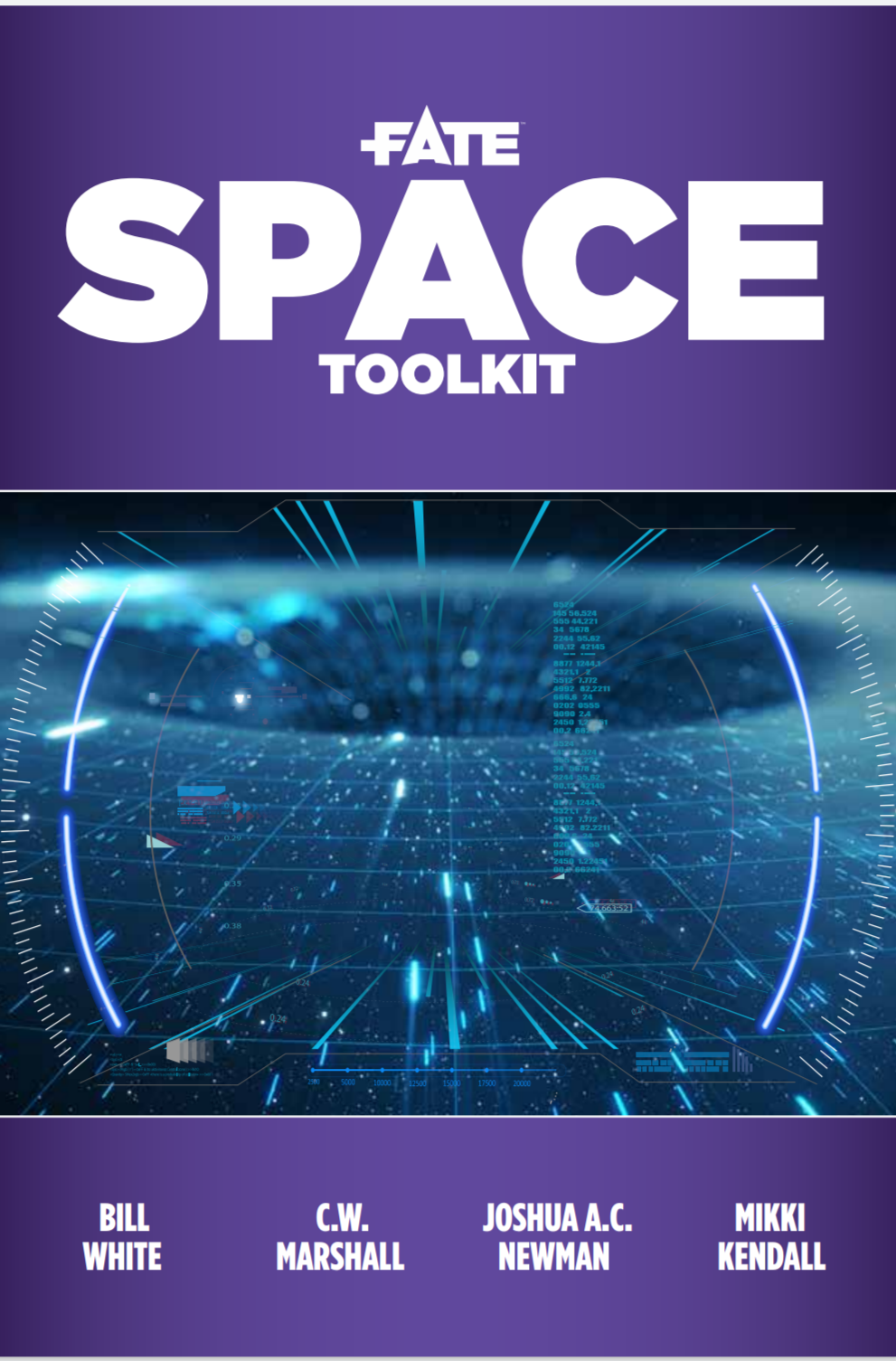Here the automatic English translation of the post with deepl. Further down the original post in Italian.
ENG
Impressions on Fate Space Toolkit
I am reading the Fate Space Toolkit. More for pleasure than for actual usefulness, since when I play I prefer to use FAE and so a lot of that stuff that contains the manual is not very useful from the mechanical point of view, even if it is as inspiration.
Let’s talk first about the usual and “mechanical” part (the one that concerns the rules that involve the use of numbers). There are many stunts, many tips on skills. They seem interesting to me but, being in general not very interested in this part, I’m not a good judge of it either.
Then there is the content one would usually expect to find in a space manual. Information on microgravity, space travel, interplanetary distances, and so on. I have read only one other such manual (gurps space). But in short I think that in general it is the classic information that you can find in this kind of text.
We come instead to the aspect that left me the most positive impression. Each topic in the manual is explained in such a way as to understand how to play the different fictions of reference. Now this in some ways did gurps space (and I’ve seen it done to other manuals in other areas: noir, pulp, fantasy, etc… ) but always declined as a variation on the description of how the mimicry of physics works. In this manual, on the other hand, we almost always refer first to narrative structure. That is, how to structure the narrative and how to modify the rules, from the “narrative” point of view (pass me the very generic term, I’m not here to make a treatise) to reproduce a certain type of fiction. And then all dropped into the context of having N people who are playing and narrating at a table. In short, it treasures all the lessons of techniques and teachings of indie games and Fate rpg in particular.
ITA
Impressioni su Fate Space Toolkit
Mi sto leggendo il Fate Space Toolkit. Più per piacere che per effettiva utilità, visto che quando gioco preferisco usare FAE e quindi tanta di quella roba che contiene il manuale non è utilissima dal punto di vista meccanico, anche se lo è come ispirazione.
Parliamo prima della parte usuale e “meccanica” (quella insomma che riguarda le regole che implicano l’uso dei numeri). Ci sono tanti stunt, tanti consigli sulle skill. Mi sembrano interessanti ma, non essendo in generale molto interessato a questa parte, non ne sono neanche in buon giudice.
C’è poi il contenuto che ci si aspetta di trovare usualmente in un manuale sullo spazio. Informazioni sulla microgravità, sui viaggi nello spazio, sulle distanze interplanetarie e così via. Ho letto solo un altro manuale di questo tipo (gurps space). Ma insomma penso che in generale siano le classiche informazioni che si trovano in questo genere di testo.
Veniamo invece all’aspetto che mi ha lasciato l’impressione più positiva. Ogni argomento del manuale è spiegato in modo tale da far capire come riprodurre le diverse fiction di riferimento.
Ora questo in qualche maniera lo faceva anche gurps space (e l’ho visto fare ad altri manuali in altri ambiti: noir, pulp, fantasy, ecc. ) ma sempre declinato come variazione sulla descrizione di come funziona la mimica della fisica.
In questo manuale invece si fa, quasi sempre, riferimento prima alla struttura narrativa. Cioè a come strutturare la narrazione e a come modificare le regole, dal punto di vista “narrativo” (passatemi il termine molto generico, non sono qua a fare un trattato) per riprodurre proprio un certo tipo di fiction. E poi il tutto calato nel contesto di avere N persone che stanno giocando e narrando ad un tavolo.
Insomma fa tesoro di tutta la lezione delle tecniche e degli insegnamenti dei giochi indie e di Fate rpg in particolare.


